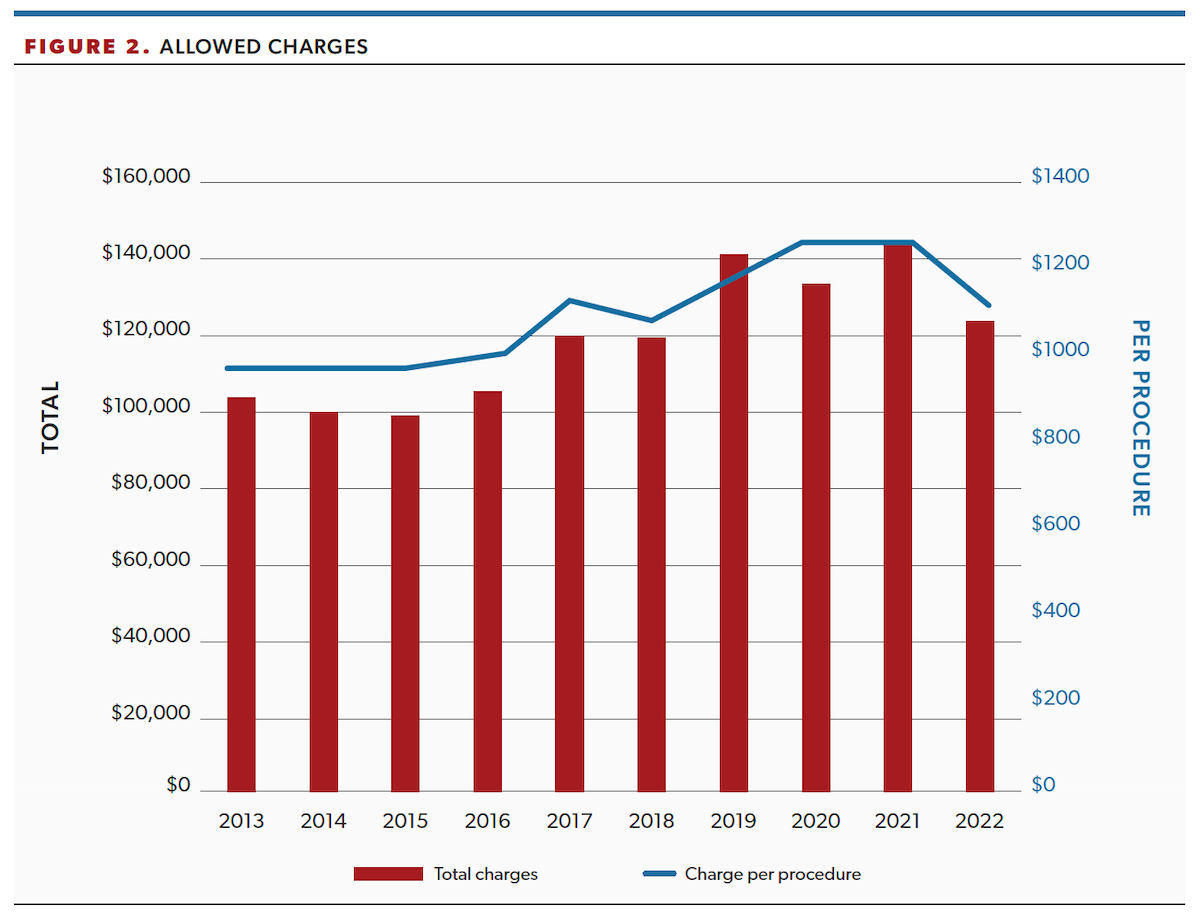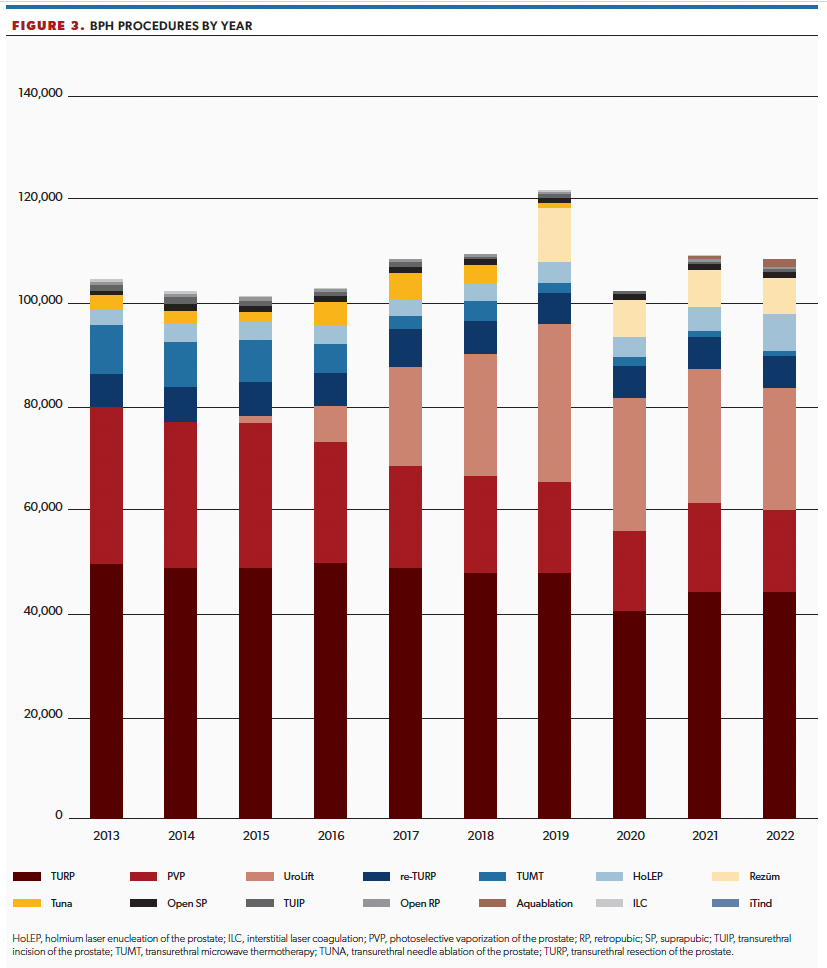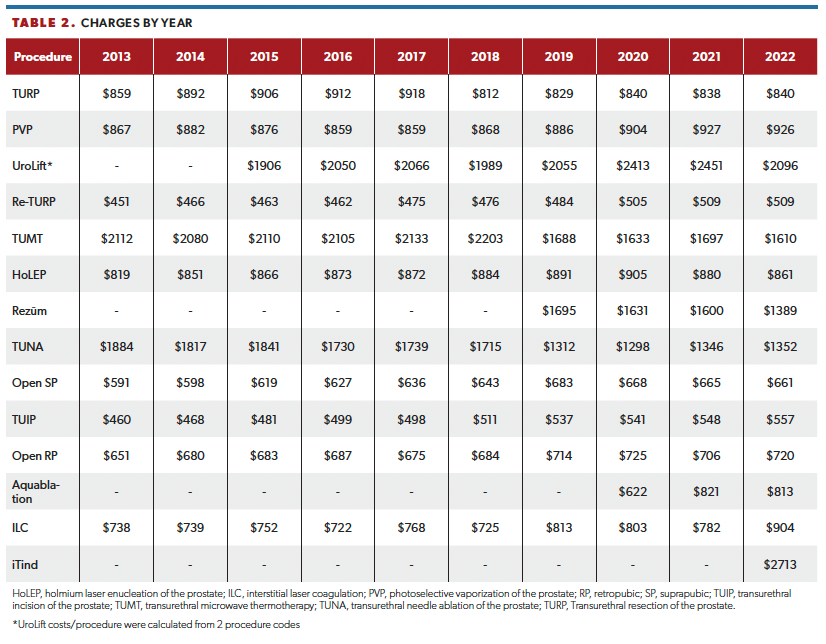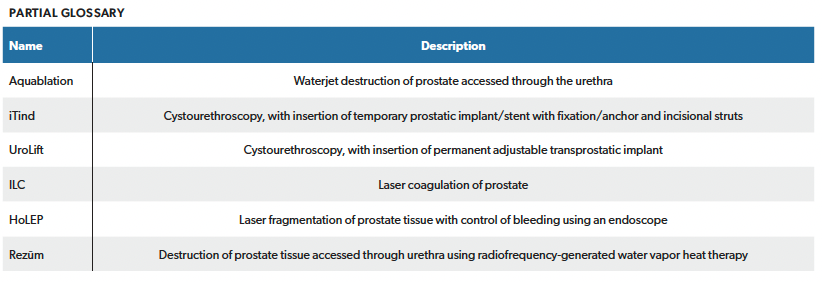What Part B data reveal about BPH procedure usage
"As investigational therapies and devices make their way through the approval process and into practice, urologists should stay abreast of early clinical results and may look to publicly available information for costs and utilization trends," writes Robert A. Dowling, MD.
Robert A. Dowling, MD

The past few years have seen an explosion of new therapies for benign prostatic hyperplasia (BPH): Aquablation, Rezūm, prostatic urethral lift (UroLift), iTind, prostatic artery embolization, Optilume BPH, the XFLO Expander System, Zenflow, and Butterfly are some of the new approved or investigational procedural treatments for this common disease, and many can be performed in the office setting.1-3 Transurethral resection of the prostate (TURP) has been considered the gold standard in surgical management of BPH, but the growing list of alternatives speaks to urologists’ desire for a safer, more effective option.4 The emergence of these new minimally invasive alternatives to TURP begs a few questions: Is TURP going away? Are some of the new options a passing fad? Is the population of men undergoing procedural therapy growing, or is there just a redistribution of utilization in a stable population?

One source of information to help answer these questions comes from publicly available Medicare data. The Centers for Medicare & Medicaid Services recently released its updated National Summary Data File, which includes Medicare Part B claims information for the past 20 years.5 From an analysis of recent data, we can form some impressions about utilization of BPH procedures paid under Part B (physician payments). In this article, I will summarize this information to help you understand how urologists are adopting these newer therapies and provide context for your own treatment patterns.

For this analysis, I downloaded the Part B claims data (allowed services and charges) for the years 2013 to 2022 (last year available). I chose 2013 because it antedates the introduction of UroLift. I examined the following procedures over that 10-year period: TURP, re-TURP, UroLift, transurethral needle ablation of the prostate (TUNA), transurethral microwave thermotherapy (TUMT), photoselective vaporization of the prostate (PVP), laser coagulation, transurethral incision of the prostate (TUIP), holmium laser enucleation of the prostate (HoLEP), open prostatectomy, Rezūm, Aquablation, and iTind. Claims data are not able to discriminate between procedures that share a Healthcare Common Procedure Coding System code; for example, monopolar TURP, bipolar TURP, and button procedures all share the code “electro-removal of prostate through bladder canal [urethra] with control of bleeding using an endoscope.” The total number of procedures has increased only modestly over the past 10 years (Figure 1). The total charges and charge/procedure have increased significantly over the same time period (Figure 2).

TURP has remained the most common surgical procedure over the past 10 years but has decreased from approximately half of all procedures in 2013 to less than 40% in 2022 (Table 1). UroLift has shown the greatest growth, from 1.4% of all procedures at its introduction in 2015 to 16% in 2022. There has been a significant decline in the volumes of TUMT, TUNA, PVP, and laser coagulation procedures over the past 10 years, whereas HoLEP procedures have more than doubled in that same time span. Rezūm enjoys approximately the same share of the procedure market as HoLEP in 2022, and Aquablation procedures more than doubled from 2021 to 2022. See Figure 3 for more detail.


Table 2 shows the allowed charges per procedure trends over the past 10 years. Per-procedure reimbursement has decreased significantly for TUMT and TUNA and has remained fairly stable for most of the other BPH procedures. iTind is a new procedure with only 1 year of data; it appears, for now, that it is the most expensive (Part B payment) of the BPH therapies. This analysis tells only part of the picture, as we do not have ready access to claims from private insurers. Because BPH is more prevalent in older men, it seems reasonable that Medicare data may be representative of the entire market. Also, this analysis does not capture costs associated with inpatient or outpatient facilities (Part A). A TURP under anesthesia is a more expensive episode of cost than a UroLift done in the office.
The bottom line and why it matters
BPH is a common disease and comprises a significant portion of the general urologist’s practice. Medicare Part B claims indicate this is a complex market, totaling more than $120 million in allowed charges for surgical procedures. TURP remains the most common surgical treatment amid a barrage of new alternatives. The long-term adoption of each of these therapies will be determined by their efficacy and safety—and by their cost. As investigational therapies and devices make their way through the approval process and into practice, urologists should stay abreast of early clinical results and may look to publicly available information for costs and utilization trends.

REFERENCES
1. Elterman D, Gao B, Lu S, Bhojani N, Zorn KC, Chughtai B. New technologies for treatment of benign prostatic hyperplasia. Urol Clin North Am. 2022;49(1):11-22. doi:10.1016/j.ucl.2021.07.007
2. Madersbacher S, Roehrborn CG, Oelke M. The role of novel minimally invasive treatments for lower urinary tract symptoms associated with benign prostatic hyperplasia. BJU Int. 2020;126(3):317-326. doi:10.1111/bju.15154
3. Gao B, Lu S, Bhojani N, Zorn KC, Chughtai B, Elterman D. Office-based procedures for BPH. Curr Urol Rep. 2021;22(12):63. doi:10.1007/s11934-021-01081-7
4. Shvero A, Calio B, Humphreys MR, Das AK. HoLEP: the new gold standard for surgical treatment of benign prostatic hyperplasia. Can J Urol. 2021;28(S2):6-10.
5. Part B National Summary Data File (previously known as BESS). Centers for Medicare & Medicaid Services. Updated October 12, 2023. Accessed October 30, 2023. https://www.cms.gov/data-research/statistics-trends-and-reports/part-b-national-summary-data-file
Potential code for prior authorizations on AMA CPT Editorial Panel meeting agenda
March 28th 2024"Good public and economic policy must align costs, benefits, and incentives; currently, all costs are incurred by physician practices, and all financial savings and benefits from prior authorization accrue to health insurance plans, leading to perverse incentives,” says Alex Shteynshlyuger, MD.
